CMMC Requirement RA.L3-3.11.7E – Supply Chain Risk Plan: Develop a plan for managing supply chain risks associated with organizational systems and system components; update the plan at least annually, and upon receipt of relevant cyber threat information, or in response to a relevant cyber incident.
Links to Publicly Available Resources
This document provides assessment guidance for conducting Cybersecurity Maturity Model Certification (CMMC) assessments for Level 3. This resource guide addresses the growing need for information and communications technology (ICT) small and medium-sized businesses (SMBs) to present a supply chain risk management (SCRM) plan for private or public sector stakeholders. Developed by the ICT Supply Chain Risk Management Task Force, this template provides a set of questions regarding an ICT supplier/provider’s implementation and application of industry standards and best practices that can help guide supply chain risk planning in a standardized way. The template provides organizations clarity for reporting and vetting processes when purchasing ICT hardware, software, and services. This web page provides helpful links to key NIST resources and activities. NIST has collaborated with public and private sector stakeholders to research and develop C-SCRM tools and metrics, producing case studies and widely used guidelines on mitigation strategies. These multiple resources reflect the complex global marketplace and assist federal agencies, companies, and others in managing cybersecurity risks in supply chains that threaten their information systems and organizations. This publication provides guidance to federal agencies on identifying, assessing, and mitigating ICT supply chain risks at all levels of their organizations. This document provides the ever increasing community of digital businesses a set of Key Practices that any organization can use to manage cybersecurity risks associated with their supply chains.
The growing dependence on products, systems, and services from external providers, along with the nature of the relationships with those providers, present an increasing level of risk to an organization. Threat actions that may increase risk include the insertion or use of counterfeits, unauthorized production, tampering, theft, insertion of malicious software and hardware, and poor manufacturing and development practices in the supply chain. Supply chain risks can be endemic or systemic within a system element or component, a system, an organization, a sector, or the Nation. Managing supply chain risk is a multifaceted undertaking that requires a coordinated effort across an organization to build trust relationships and communicate with both internal and external stakeholders. Supply chain risk management (SCRM) activities involve identifying and assessing risks, determining appropriate mitigating actions, developing SCRM plans to document selected mitigating actions, and monitoring performance against plans. SCRM plans address requirements for developing trustworthy, secure, and resilient systems and system components, including the application of the security design principles implemented as part of life cycle-based systems security engineering processes.
[NIST SP 800-161 Rev. 1] provides guidance on supply chain risk management.
Further Discussion
An organization is required to have a supply chain risk management plan that assesses and responds to the identified risks from those organizations that provide IT products or services, including any cloud or other third-party services with a role in the operation of the system. The organization should be cognizant of services outside the scope of the system but required for the operation of the system as part of their plan. Since the cyber environment changes rapidly and continuously, it is equally important for the organization to update the plan in response to supply chain cyber incidents or emerging information.
